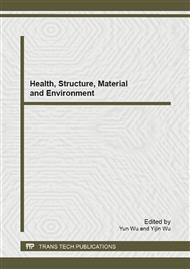p.1023
p.1029
p.1033
p.1039
p.1043
p.1049
p.1054
p.1058
p.1064
Effect of Quartz Sand Coated with Water-Treatment Residuals as Arsenic Adsorbent
Abstract:
In this study, quartz sand coated with water-treatment residuals was tested for its effectiveness as an arsenic adsorbent. The surface characteristics of the quartz sand before and after modification were analyzed. Different amounts of modified quartz sand were then tested for their adsorption capacity, using raw water with an arsenic concentration of 500 ppb. Analysis showed that the surface area and average pore diameter of the quartz sand had increased significantly after modification, as did the amounts of iron, manganese, and aluminum found as surface elements. Using both Freundlich and Langmuir isotherm models to measure the effectiveness of arsenic adsorption by the modified quartz sand, it was found that the latter model, for monolayer adsorption, was more appropriate.
Info:
Periodical:
Pages:
1064-1069
Citation:
Online since:
February 2013
Authors:
Keywords:
Price:
Сopyright:
© 2013 Trans Tech Publications Ltd. All Rights Reserved
Share:
Citation:


